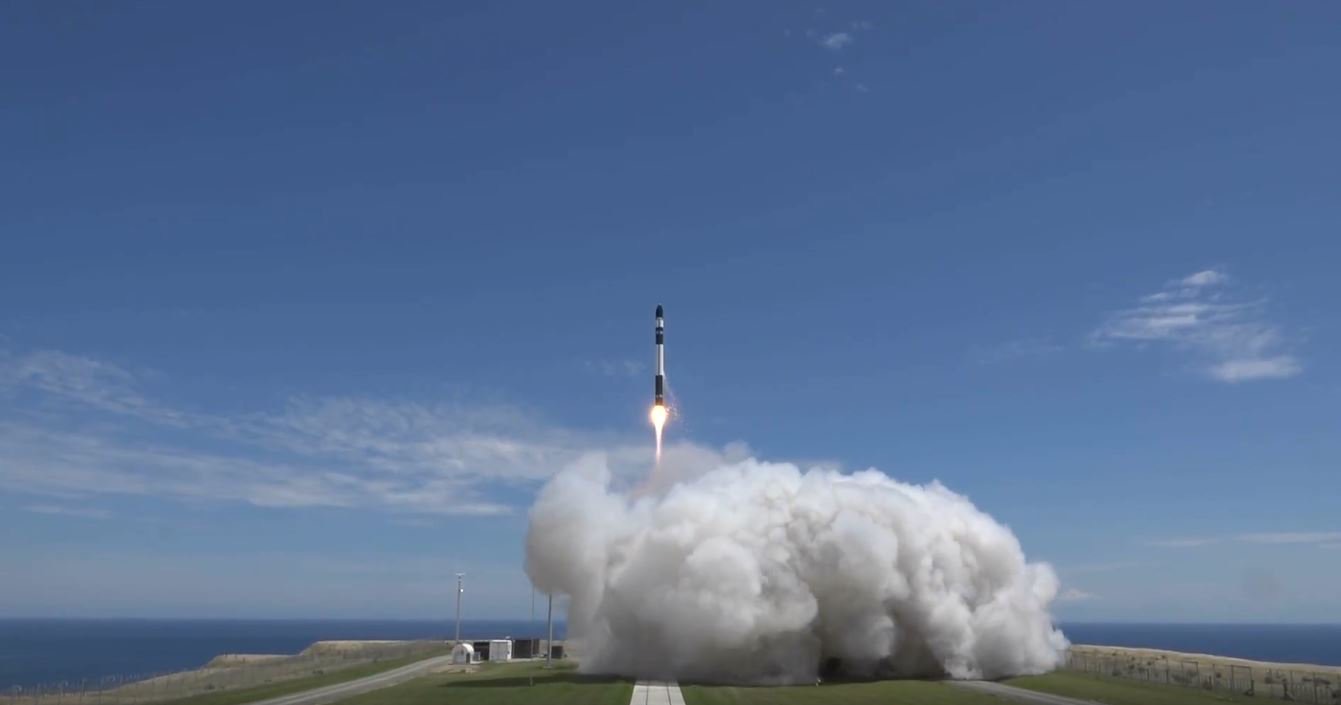
Rocket Lab is officially open for business.
The spaceflight startup's Electron rocket aced its first commercial flight tonight (Nov. 10), lofting six small satellites and a technology demonstrator to low-Earth orbit, about 310 miles (500 kilometers) above our planet.
The mission, which Rocket Lab called "It's Business Time," lifted off from the company's New Zealand launch site at 10:50 p.m. EST (0350 GMT and 4:50 p.m. local New Zealand time on Nov. 11). The two-stage Electron first delivered its payloads to an elliptical parking orbit; a "kick stage" that separated from the rocket's upper stage then circularized the orbits of the satellites, which were deployed about 54 minutes after liftoff, Rocket Lab representatives said. ["It's Business Time!" Rocket Lab's 1st Commercial Launch in Photos]
"All payloads deployed. It really is Business Time," Rocket Lab representatives said tonight via Twitter.
The six satellites that rode atop the Electron tonight belong to Spire Global, Tyvak Nano-Satellite Systems, Fleet Space Technologies and the Irvine CubeSat STEM Program. The technology demonstrator is a "drag sail," a piece of gear designed to alleviate the growing space-junk problem by helping de-orbit defunct spacecraft faster and more efficiently.
Rocket Lab aims to make spaceflight more frequent and cost-effective with the 57-foot-tall (17 meters) Electron, which can loft about 500 lbs. (227 kilograms) of payload to Earth orbit on each of its $5 million liftoffs.
Electron has flown twice before, on demonstration missions that launched in May of 2017 and January of this year. On that latter flight, "Still Testing," the rocket lofted four small satellites to orbit — three Earth-observing cubesats for the companies Planet and Spire Global, and a 3-foot-wide (1 m) reflective ball called The Humanity Star.
Get the Space.com Newsletter
Breaking space news, the latest updates on rocket launches, skywatching events and more!
The Humanity Star was designed to be an inspiring temporary target for skywatchers around the world. And it was very temporary: The satellite fell back into Earth's atmosphere in March.
Tonight's launch was originally scheduled to take place in April, but Rocket Lab delayed it multiple times, to deal with a misbehaving motor controller in one of the Electron's first-stage engines and other issues. [In Photos: Rocket Lab and Its Electron Booster]
There will not be such a lengthy fallow period until the next Electron launch, if all goes according to plan. Another Electron is scheduled to launch 10 tiny cubesats in December, on a mission for NASA called ELaNa-XIX (Educational Launch of Nanosatellites No. 19).
Rocket Lab's primary launch site is on the Mahia Peninsula, on New Zealand's North Island. But the company will also fly from the Mid-Atlantic Regional Spaceport in Virginia; the first missions from the U.S. pad could come as early as next year, Rocket Lab representatives have said.
The company recently unveiled a huge new rocket-production facility in Auckland, New Zealand, which will help build enough Electrons to keep up with the envisioned high demand. Rocket Lab also has a manufacturing facility at its headquarters in Huntington Beach, California.
Mike Wall's book about the search for alien life, "Out There," will be published on Nov. 13 by Grand Central Publishing. Follow him on Twitter @michaeldwall. Follow us @Spacedotcom or Facebook. Originally published on Space.com.
Join our Space Forums to keep talking space on the latest missions, night sky and more! And if you have a news tip, correction or comment, let us know at: community@space.com.

Michael Wall is a Senior Space Writer with Space.com and joined the team in 2010. He primarily covers exoplanets, spaceflight and military space, but has been known to dabble in the space art beat. His book about the search for alien life, "Out There," was published on Nov. 13, 2018. Before becoming a science writer, Michael worked as a herpetologist and wildlife biologist. He has a Ph.D. in evolutionary biology from the University of Sydney, Australia, a bachelor's degree from the University of Arizona, and a graduate certificate in science writing from the University of California, Santa Cruz. To find out what his latest project is, you can follow Michael on Twitter.









